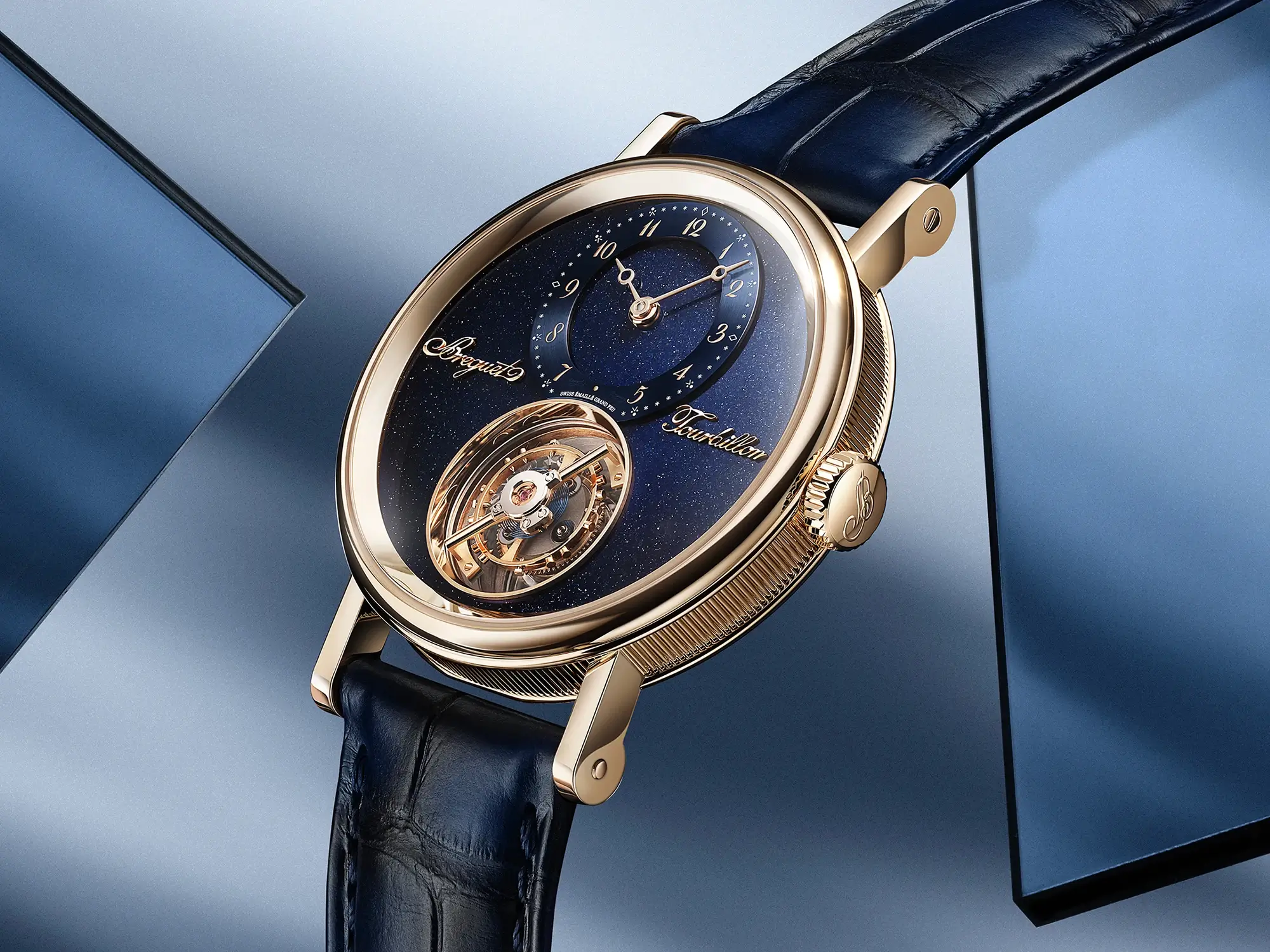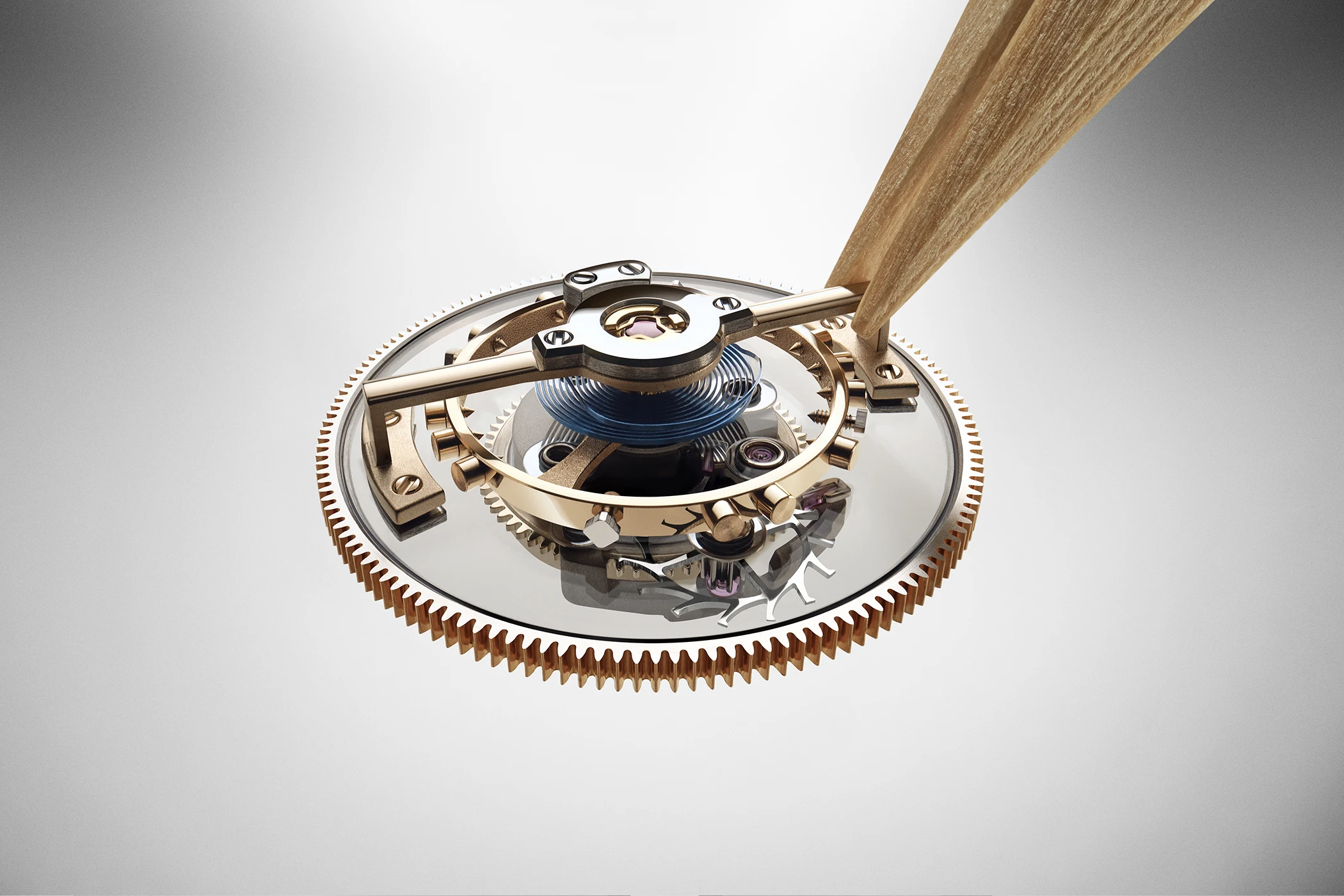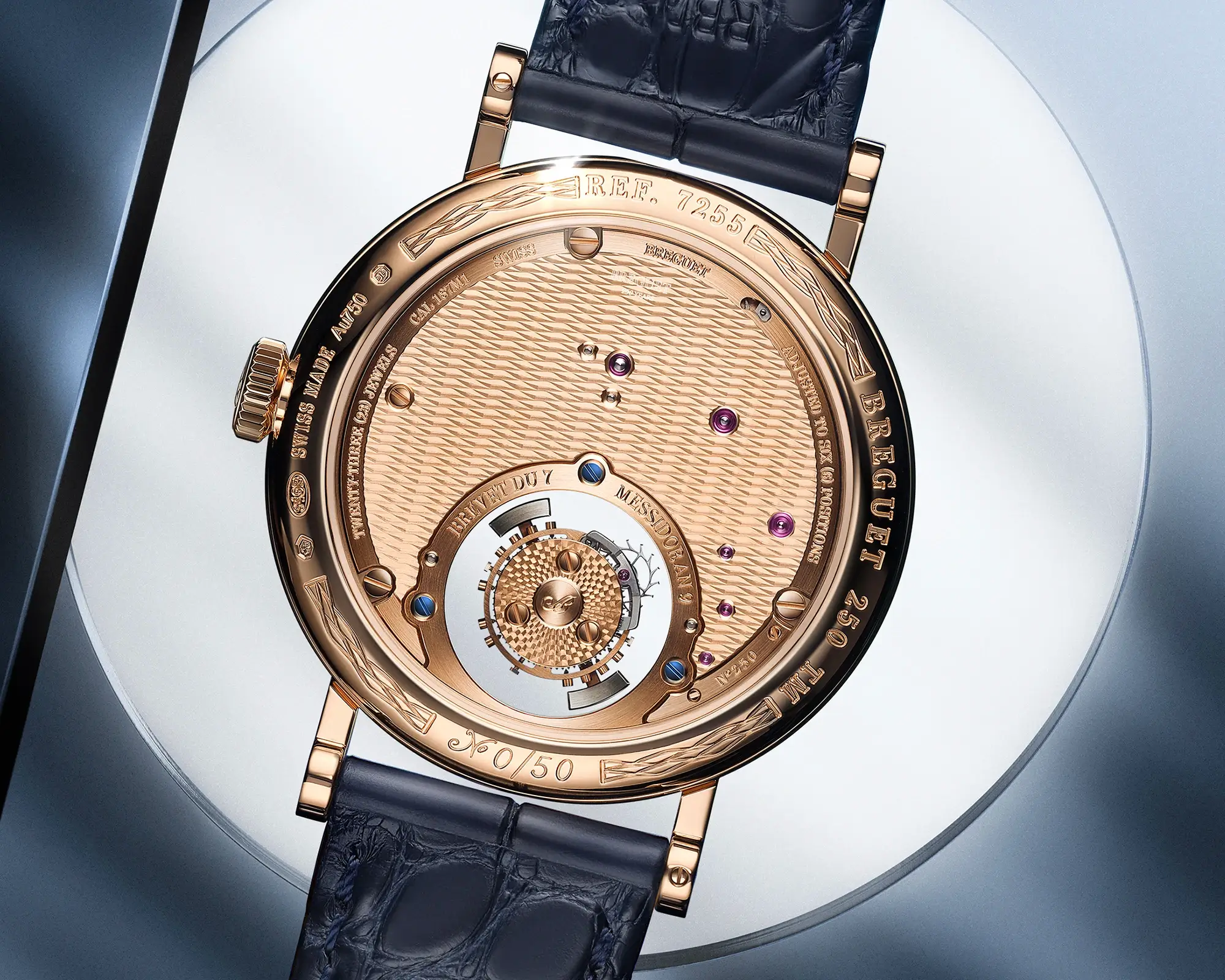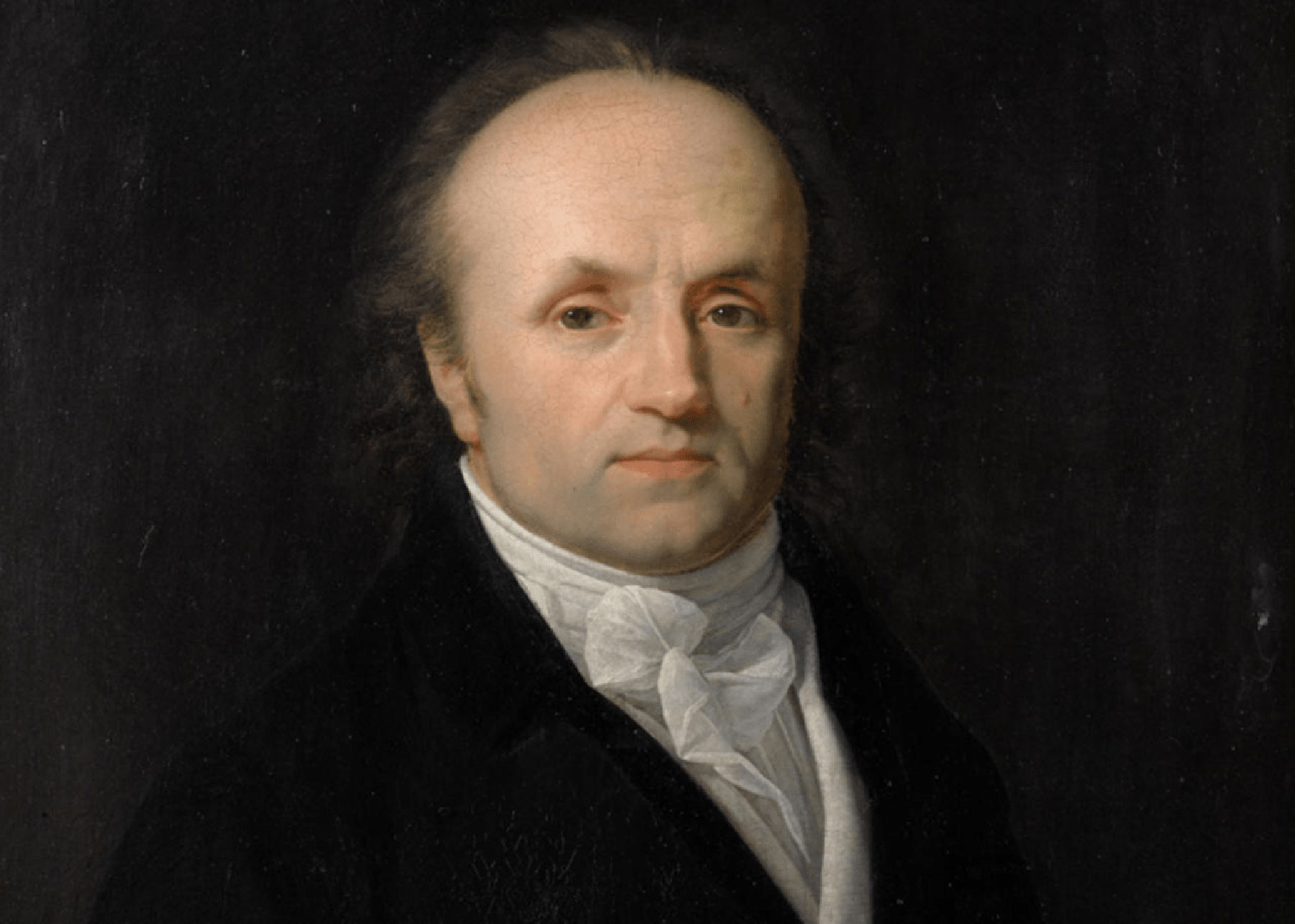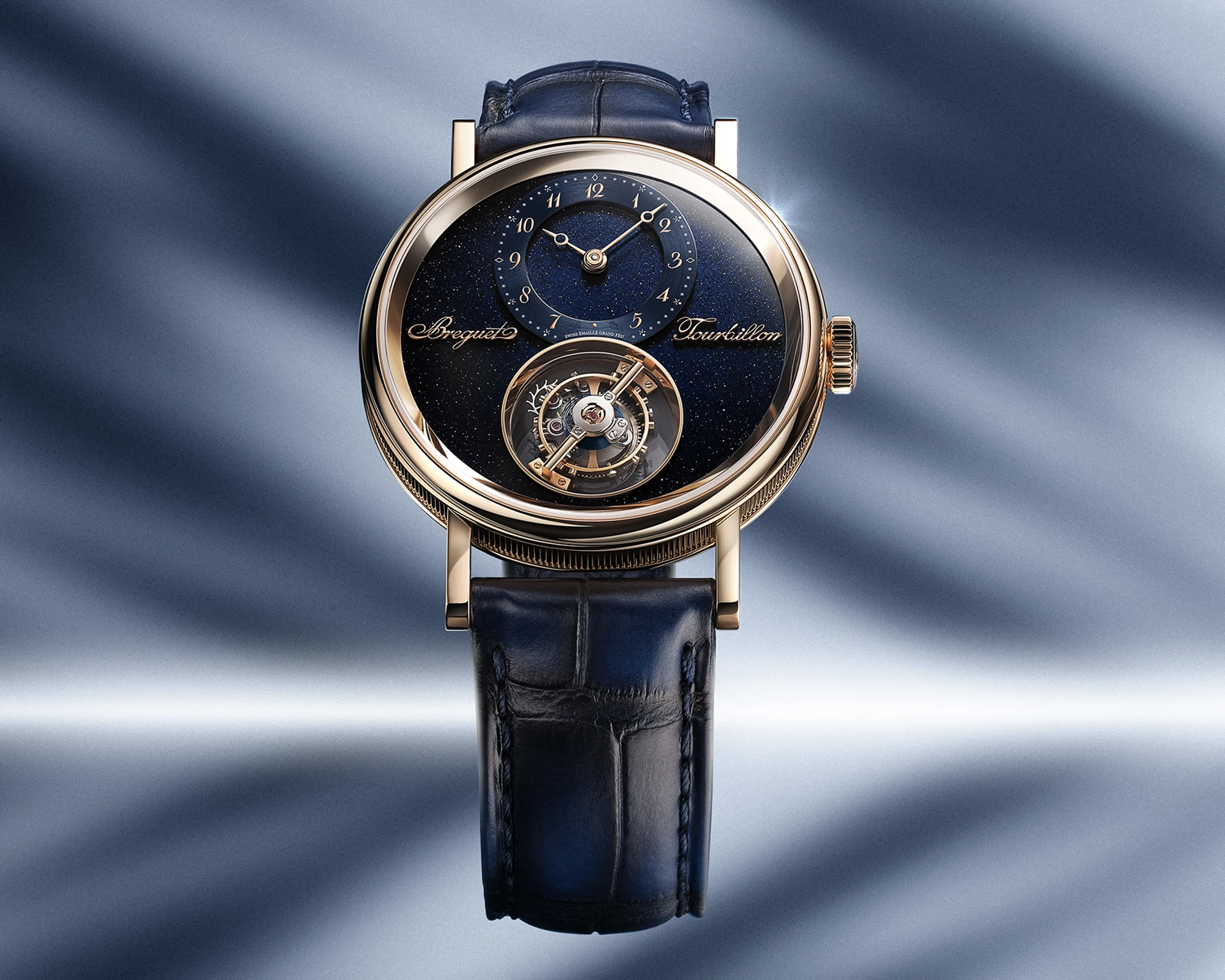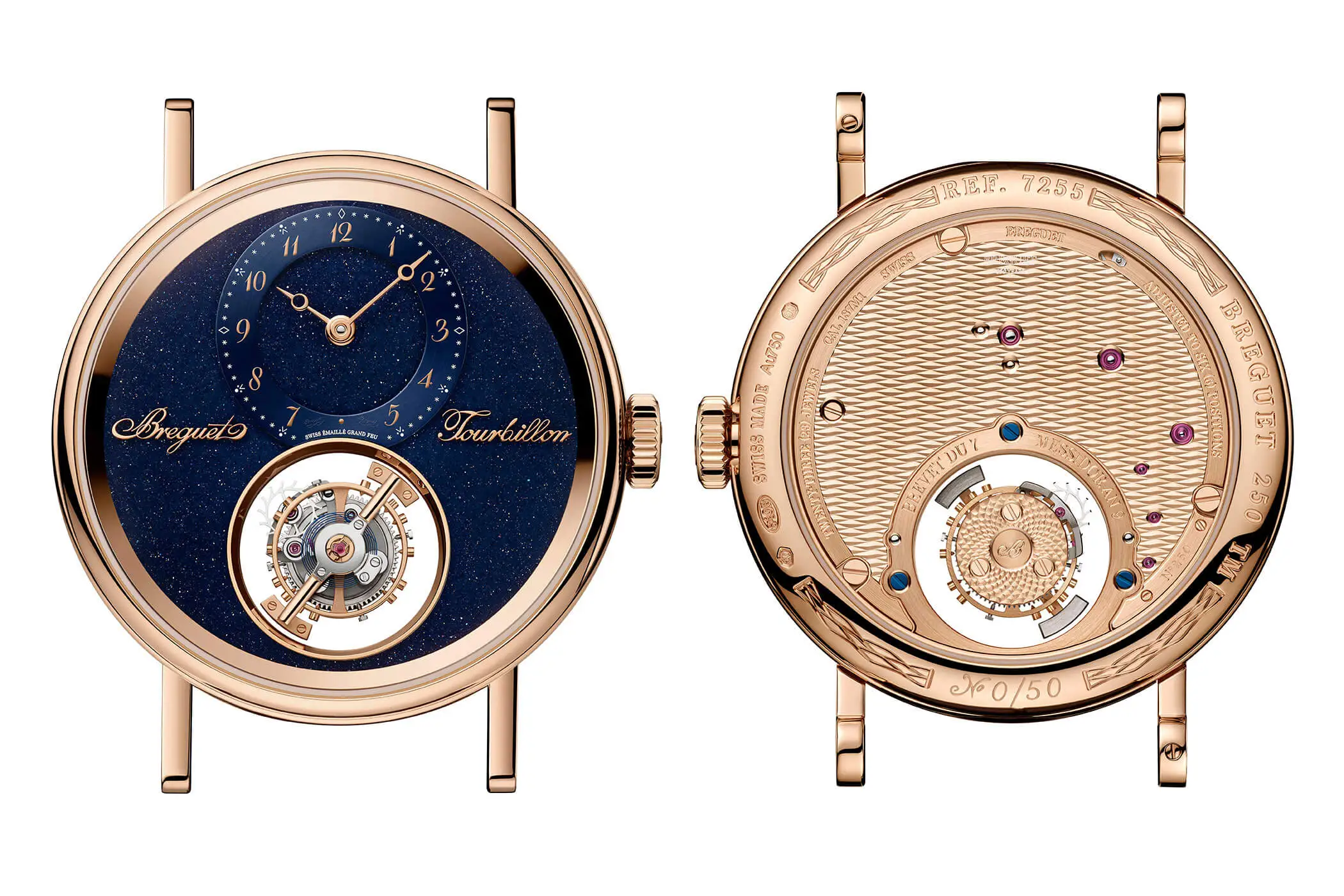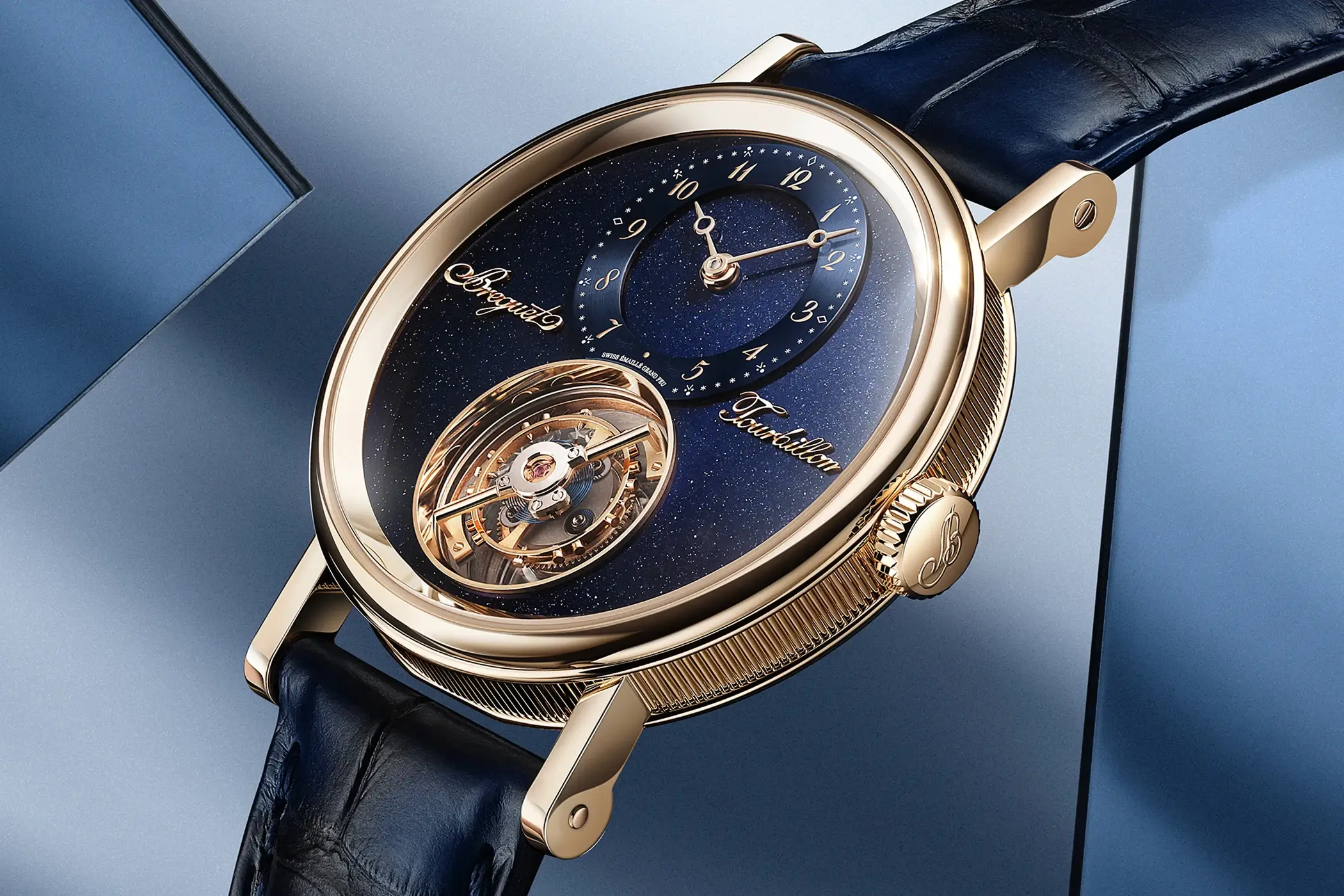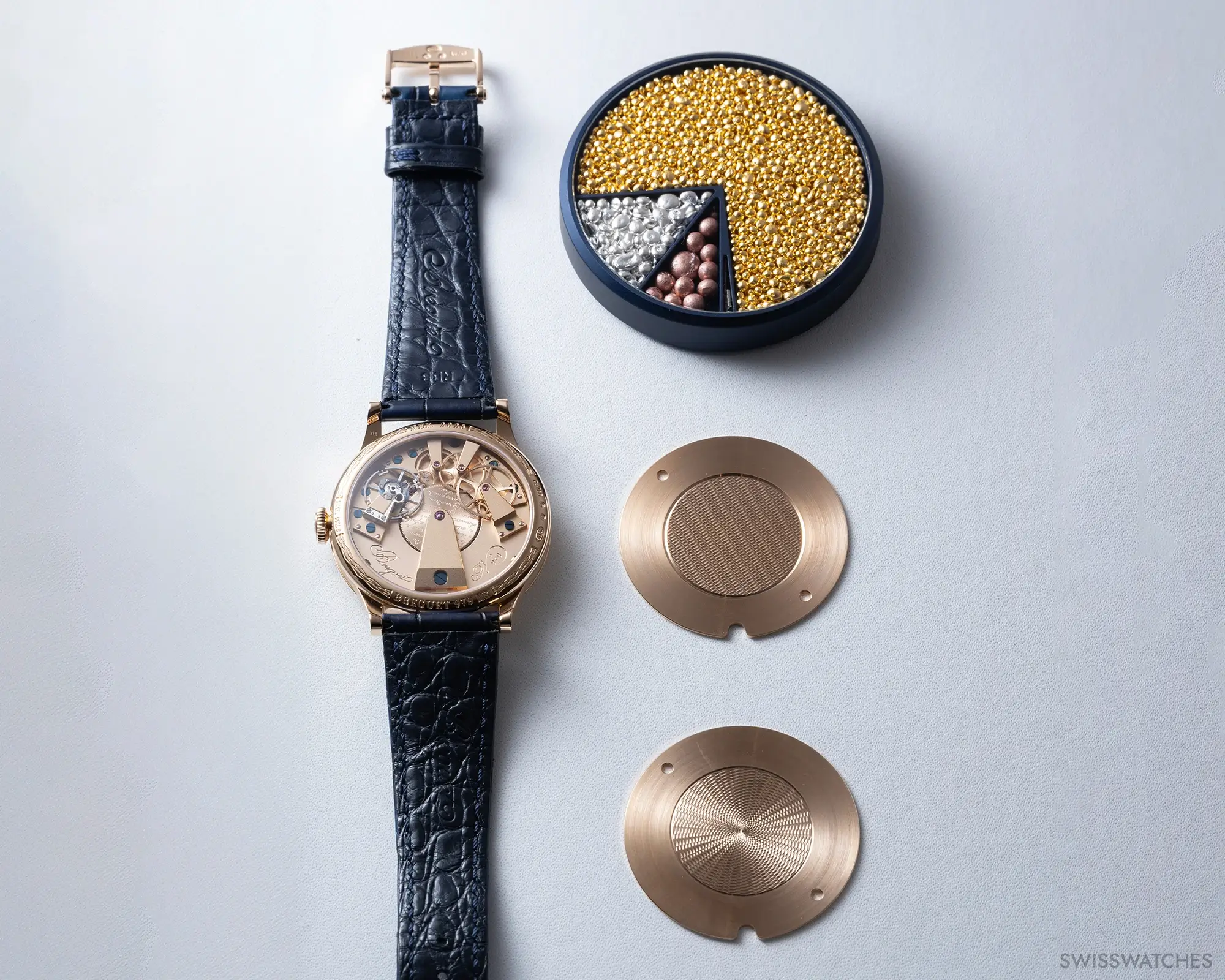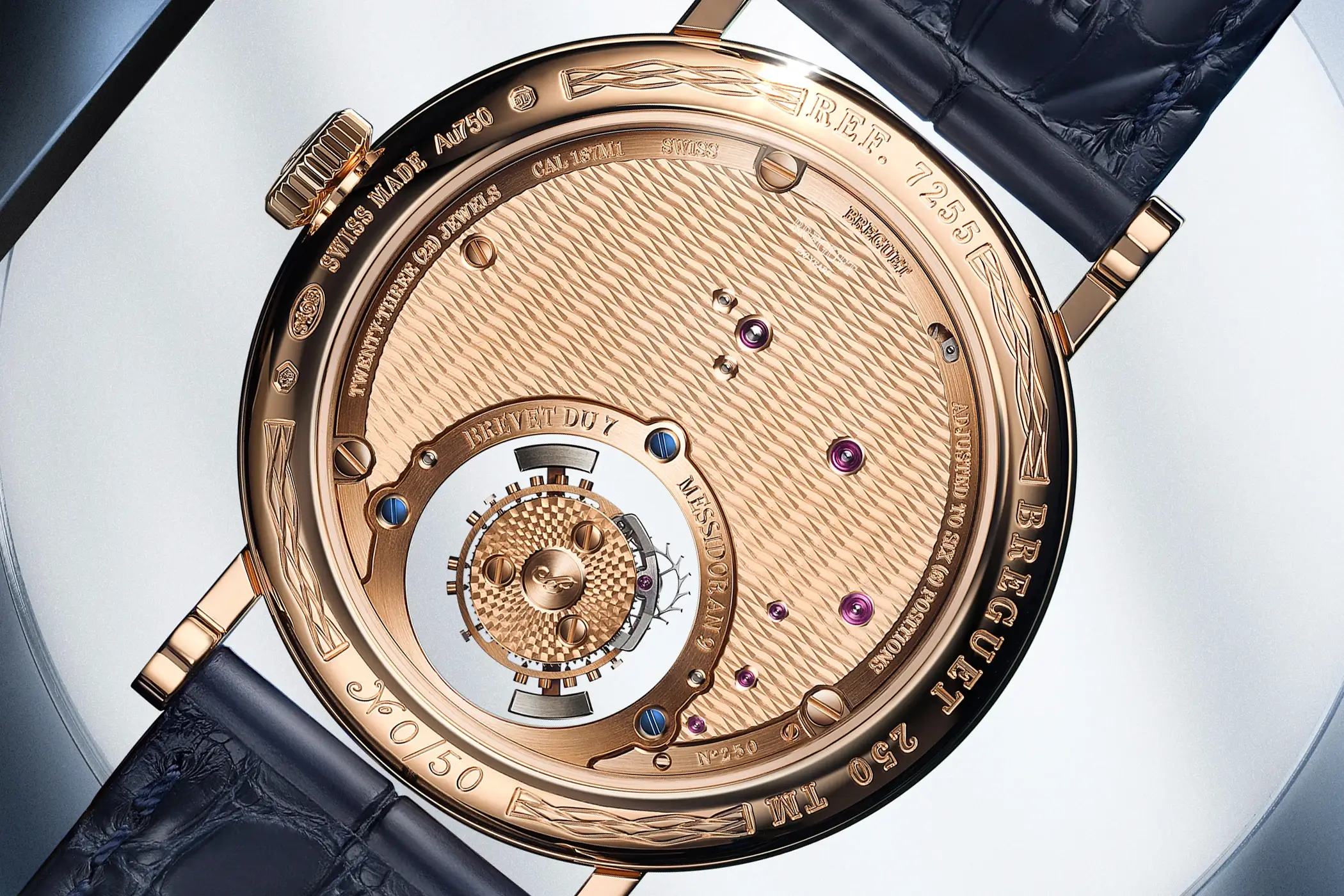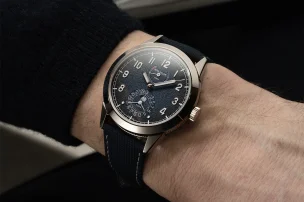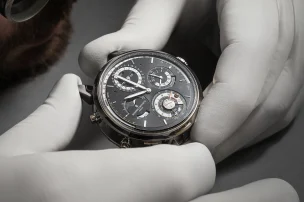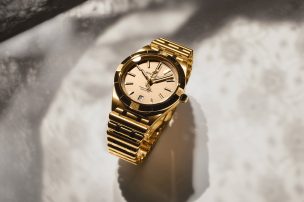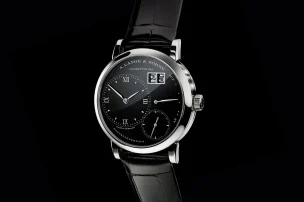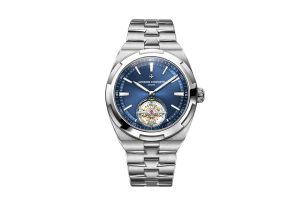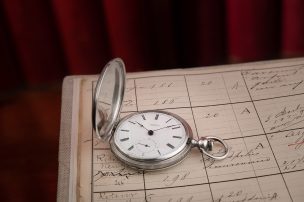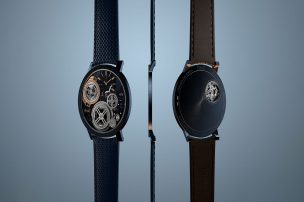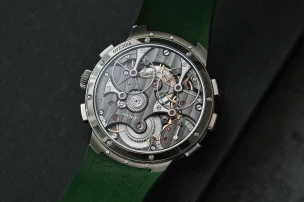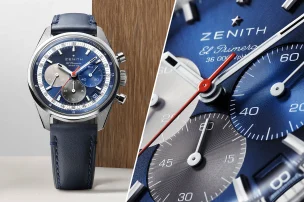
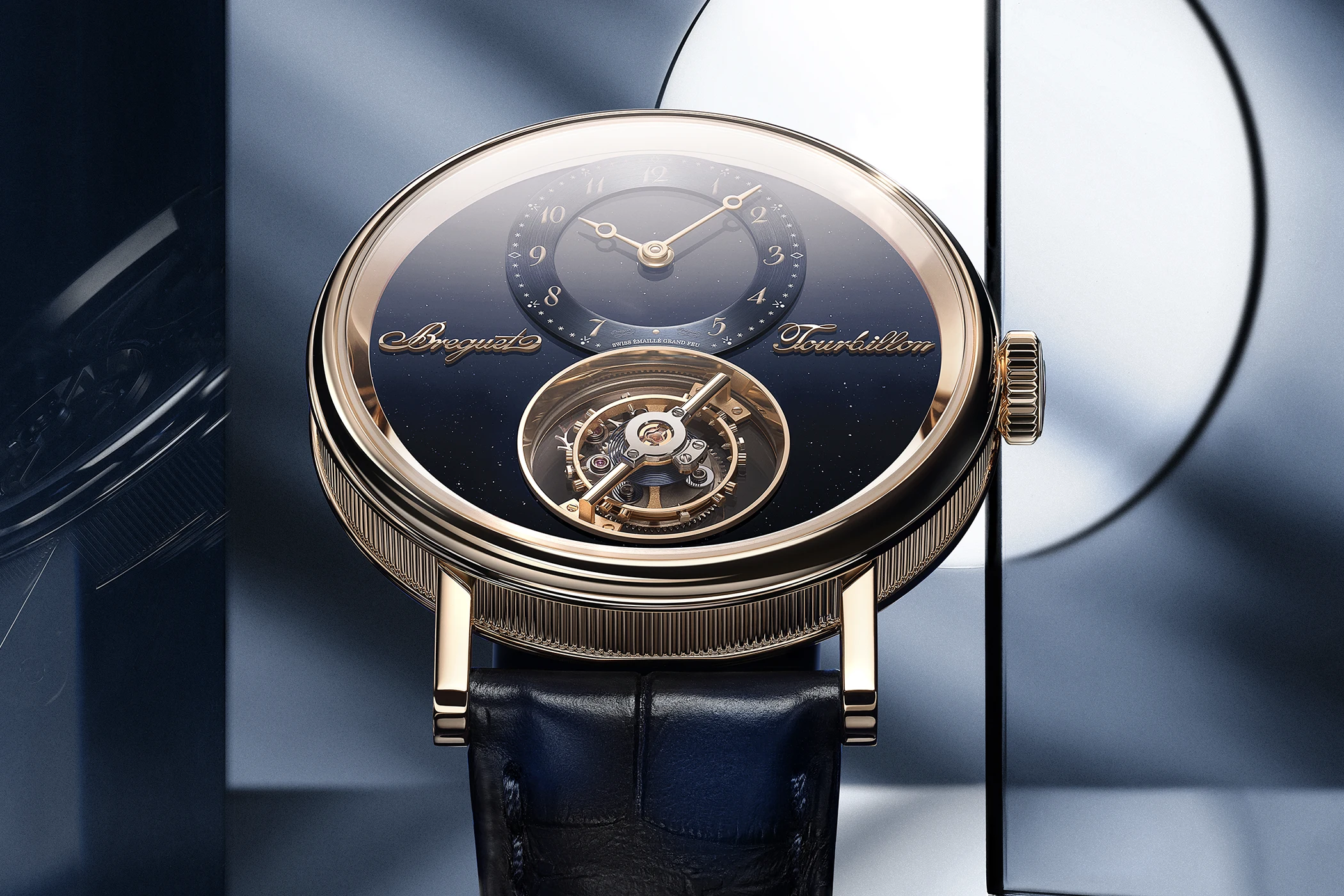
Enigmatic Elegance Takes Flight: The New Breguet Classique Tourbillon Sidéral 7255
Breguet’s first model with a flying tourbillon pays homage to the invention of the tourbillon by founder Abraham-Louis Breguet on 26 June 1801.
The world of haute horlogerie turns its attention to Geneva today, June 26, 2025, as Breguet is presenting another remarkable new model in celebration of its 250th anniversary: the Classique Tourbillon Sidéral 7255, a limited edition of just 50 pieces. This extraordinary creation honors Abraham-Louis Breguet’s invention of the tourbillon on June 26, 1801. For the first time, however, Breguet has paired its most historically significant innovation with a flying tourbillon – enhanced by a ‘mysterious’ concept not seen from the manufacture in two decades.
The tourbillon: a centrepiece of innovation
It was no surprise that Breguet would dedicate a new creation to what is arguably the most important chapter in the manufacture’s history during this year’s anniversary marathon. The tourbillon, which remains largely unchanged in form to this day, is inseparably linked to the name Breguet. Patented 224 years ago, the Manufacture has faithfully preserved and continuously evolved this legacy. With the Classique Tourbillon Sidéral 7255, Breguet introduces, for the first time, a version featuring a flying tourbillon, paired with a ‘mysterious’ concept last seen nearly 20 years ago in the Classique Tourbillon Messidor 5335. Even though the Messidor gave the impression that the tourbillon was floating without bridges and plates when it was launched in 2007, it was not a flying tourbillon in its classic construction. This is because the parts were merely supported by transparent sapphire discs that were barely visible to the observer. Therefore, mystery tourbillons can appear to be flying tourbillons at first glance. However, the new Classique Tourbillon Sidéral 7255 has no upper sapphire bridge, making it Breguet’s first true flying tourbillon.
The decision to incorporate a tourbillon into this anniversary model carries a double significance. On the one hand, it commemorates the anniversary of the patent granted to A.-L. Breguet. On the other hand, it establishes a direct link to Breguet’s deep interest in astronomy. The term ‘tourbillon’ itself, which was extended in the 17th and 18th centuries by mathematician Blaise Pascal to mean ‘a material system driven by a rotating movement’, once referred to planetary systems, thus creating a direct link to astronomy. Following in the scholarly tradition of his time, Abraham-Louis Breguet created an invention that, 224 years later, has kept its relevance and appeal.
Gregory Kissling, CEO of Breguet, emphasises the significance of this creation: ‘The tourbillon, invented by Abraham-Louis Breguet in 1801, remains one of the most sophisticated complications in watchmaking. Its manufacture represents the technical excellence to which the Breguet brand has been committed for over two centuries.’
The evolution of the tourbillon: flying and mysteriously suspended
When A.-L. Breguet designed the tourbillon, he intentionally left its technical characteristics open-ended, viewing it as a principle with potential for continuous development. The Breguet manufacture remains true to this innovative spirit and presents a completely new interpretation with the Classique Tourbillon Sidéral 7255.
The flying tourbillon is a later variant of the traditional tourbillon. It should be noted here that the invention of the flying tourbillon in 1920 is attributed to the German watchmaker Alfred Helwig, who developed this design to present the tourbillon in an even more impressive way and to increase the visibility of the mechanism. While the original purpose – to compensate for the effects of gravity on the balance wheel – remains unchanged, the design differs significantly. A flying tourbillon is held only by its lower bridge, eliminating the upper bridge and making the cage appear to float freely. This requires even more precise adjustment, increased stability, and perfect balancing to ensure robustness and accuracy.
Emmanuel Breguet, Vice President and Head of Patrimony, reports on the enormous effort involved in the manufacturing process: ‘The manufacturing time was more than six years, twice as long as for a “normal” Breguet watch. This gives an idea of how complex the individual work steps were and how difficult it was to find qualified employees for this task, even in the environment of the great master watchmaker.’
A special feature of the Classique Tourbillon Sidéral 7255 is the combination of the flying tourbillon with a ‘mysterious’ concept. The bridges of the tourbillon cage and the lower bearing are made of anti-reflective sapphire crystal, making them virtually invisible. The contact point between the gear train and the cage is also hidden from view, as it is located outside the tourbillon opening and is concealed by the dial. This interplay creates a fascinating floating effect and draws the eye entirely to the rotating tourbillon itself.
Although the flying tourbillon was developed in the early 20th century, as mentioned above, the first traces of these mysterious watches date back to the 1880s in Le Locle. Breguet has masterfully adapted these techniques and combined them in this new creation. ‘This is quite simply the first time in Breguet’s history that a flying tourbillon has been presented. What a wonderful way to celebrate our 224th anniversary!’ says Gregory Kissling.
Astronomy on your wrist: a dial like the starry sky
Abraham-Louis Breguet’s profound connection to astronomy is beautifully reflected in the aesthetic design of the Classique Tourbillon Sidéral 7255. Born in Neuchâtel and educated at the Collège Mazarin in Paris, where he was taught by mathematician Abbé Marie, among others, Breguet cultivated a deep passion for astronomical studies. His later membership of the Académie des Sciences and the Bureau des Longitudes testify to his extensive scientific knowledge.
This historical connection is reflected in the design of the watch. For the first time in the history of the Breguet manufacture, a dial with aventurine enamel has been refined on a gold plate. The dial’s deep-blue hue is interspersed with sparkling copper particles, making it reminiscent of a clear night sky studded with stars. The art of aventurine enamelling dates back to the early 17th century and was executed for this model using the elaborate Grand Feu technique. This involves heating the glass powder to over 800 degrees Celsius, a process that requires at least five repetitions and the utmost precision. Each aventurine enamel dial is handmade, making each of the 50 models unique.
‘Each of our anniversary models tells a story. With this new model, we wanted to tell the story of the tourbillon. The name of this new model contains the word “Sidéral”, which refers to the stars. And let us remember what the term “tourbillon” referred to in A.-L. Breguet’s time: celestial bodies rotating around an axis. The connection is obvious! When you look up at the night sky on a clear night, you see countless stars. This is where aventurine reveals its full meaning. The copper particles in aventurine are reminiscent of the stars in the sky. Stars – or celestial bodies. It all makes sense,’ says Gregory Kissling, explaining the choice of material.
Movement and finishing
The hand-wound calibre 187M1 powers the Classique Tourbillon Sidéral 7255 and offers a power reserve of 50 hours. The tourbillon itself is artfully staged: it protrudes 2.2 mm above the main plate and 0.9 mm above the aventurine dial. This creates an impressive three-dimensional effect that resembles a continuation of the metaphor of celestial bodies embedded in the vastness of space. The entire movement’s structure centers around the tourbillon, whose proportions define the entire watch.
The dial consists of several elements: an enamelled gold base with aventurine glass, a blue PVD-treated gold bezel for the tourbillon, an hour ring and applied ‘Breguet’ and ‘Tourbillon’ lettering in gold-plated Breguet gold. These elements are not only aesthetically pleasing, but also conceal the ‘mysterious’ part of the construction, which blends seamlessly into the rest of the movement.
The watch is crafted from Breguet’s proprietary gold alloy, which was introduced to mark the brand’s 250th anniversary and has already been used in previous anniversary models. Its warm, subtle rose colour is inspired by the gold used by watchmakers such as Breguet in the 18th century. The alloy, consisting of 75% gold enriched with silver, copper and palladium, is characterised by its lustre and resistance to discolouration.
The watch’s decoration also pays homage to the manufacture’s history. The back of the movement is embellished with a new ‘Quai de l’Horloge’ guilloché pattern, which was unveiled this year and whose design is inspired by the characteristic shapes of the Île de la Cité and Île Saint-Louis. The dial side features the brand’s secret signatures, complemented by traditional features such as the finely fluted case middle, straight lugs and characteristic Breguet hands with an eccentrically openworked ‘pomme’ tip. Each of the 50 watches is individually numbered from 01/50 to 50/50 on the back. The price is 220,700 euros including VAT.



